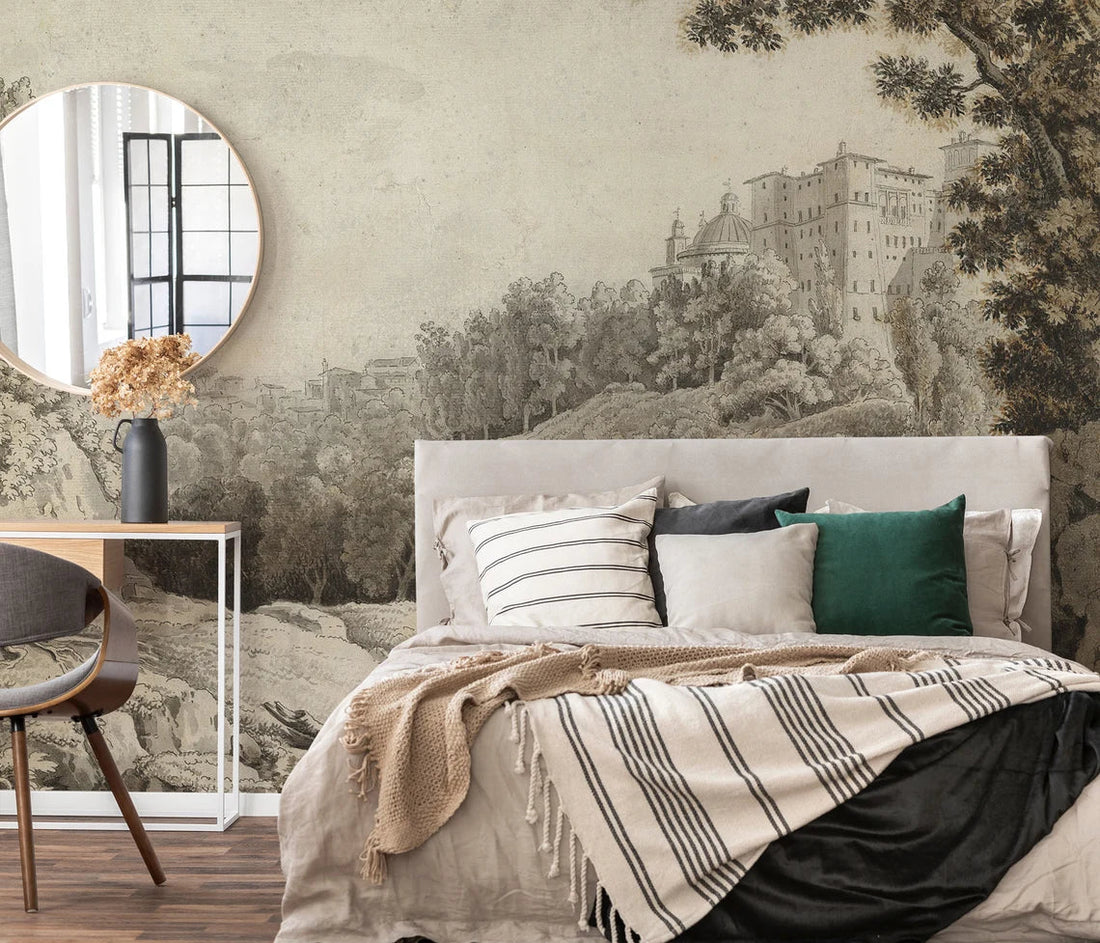
The Future of Bespoke Decor: Trends to Watch
Sai SandeepShare
Bespoke interiors continue to evolve, blending timeless craftsmanship with innovative thinking to create personalized living spaces. At Artvikta Studio, we prove that exceptional bespoke interior decor doesn't always require cutting-edge technology. Instead, we rely on sustainable practices, artisanal techniques, and creative problem-solving to transform spaces. In this comprehensive guide, we explore key trends shaping the future of bespoke interiors, offering detailed explanations and modern examples that illustrate how to achieve outstanding results using a hands-on, artisan approach.
1. Thoughtful Integration of Available Technology
Even without the latest high-tech gadgets, practical technology can enhance your bespoke interiors. By incorporating reliable, user-friendly solutions, you can improve comfort and efficiency without overwhelming your space.
-
Simple Automation:
Use programmable timers and basic remote-controlled lighting to create a cozy ambiance.
Example: Install dimmer switches to adjust the lighting mood in your living room at different times of the day. -
Discrete Enhancements:
Integrate basic sensor-based devices such as motion-sensor lights or simple thermostats that are easy to manage and maintain.
Example: A basic thermostat can keep your home comfortable without the need for a full smart home system.
These practical methods show that even modest technological enhancements can make a significant impact on the overall functionality and ambiance of your space.
2. Sustainability and Eco-Friendly Innovations
Sustainability remains a top priority in bespoke interiors. Embracing eco-friendly practices and materials not only enhances the visual appeal of your space but also minimizes environmental impact.
-
Reclaimed Materials:
Incorporate reclaimed wood, repurposed metal, and other salvaged elements into your custom furniture and decor.
Example: A dining table crafted from reclaimed oak tells a story and supports sustainable practices. -
Natural Finishes:
Use non-toxic, low-VOC finishes and stains to enhance the natural beauty of your materials.
Example: Eco-friendly varnishes protect wood surfaces while preserving an organic look. -
Energy-Efficient Lighting:
Utilize LED lighting options that are both energy-saving and long-lasting.
Example: Replacing traditional bulbs with LEDs reduces energy consumption while keeping the ambiance warm and inviting.
These eco-friendly practices ensure that your bespoke interiors are as sustainable as they are beautiful.
3. Adaptive and Multi-Functional Spaces
As living spaces become more dynamic, designing interiors that adapt to multiple uses is essential. Even without modern modular technology, creative layout and furniture design can maximize space and functionality.
-
Modular Furniture Concepts:
Design pieces that serve dual purposes, such as storage-integrated seating or convertible tables.
Example: A fold-away desk or a coffee table with hidden storage helps maximize space in a small apartment. -
Flexible Layouts:
Plan room arrangements that can easily transition between different functions.
Example: A living area that converts into a workspace by rearranging furniture meets various daily needs. -
Zone Definition:
Use rugs, lighting, and strategic furniture grouping to define distinct areas within an open space.
Example: A large area rug can delineate a cozy seating area within an open-plan living room.
These design approaches create interiors that are both beautiful and highly adaptable to various lifestyles.
4. Advanced Material Selection and Finishes
The materials chosen for bespoke interiors play a critical role in defining a space’s character and durability. Embracing advanced material selection and finishes can offer a unique tactile experience and a modern aesthetic.
-
Natural and Engineered Materials:
Combine natural elements like stone and wood with engineered materials to achieve durability and visual interest.
Example: An engineered stone countertop paired with natural wood cabinetry creates a balanced, striking look. -
Textural Contrasts:
Use materials with varying textures to add depth and complexity.
Example: Pairing a smooth, polished surface with rough-hewn reclaimed wood creates an engaging contrast. -
Traditional Craft Techniques:
Emphasize artisanal methods such as hand-carving, inlay work, and custom finishes.
Example: Handcrafted moldings and bespoke wall paneling bring warmth and character to a room.
This blend of traditional techniques and modern material innovation ensures that your space remains both contemporary and timeless.
5. Traditional Visualization and Planning Techniques
While modern visualization tools like VR and AR are gaining traction, traditional planning methods remain invaluable in bespoke interiors. These techniques ensure a personal touch and an accurate representation of your envisioned space.
-
Mood Boards and Sketches:
Create detailed mood boards and hand-drawn sketches to communicate your ideas clearly.
Example: A physical mood board featuring fabric swatches, color samples, and material textures can be a crucial part of the design consultation process. -
Sample Boards:
Assemble sample boards with actual material swatches and finish samples.
Example: Presenting a sample board during a consultation helps clients visualize the final look of their space. -
In-Person Consultations:
Rely on face-to-face meetings to discuss ideas, review sketches, and refine designs based on hands-on feedback.
Example: An in-home consultation allows our team to experience your space firsthand, ensuring every detail is considered.
Traditional methods foster a collaborative environment, ensuring that your bespoke interiors are meticulously planned and perfectly executed.
6. Emphasis on Timeless Craftsmanship
The essence of bespoke interiors is rooted in timeless craftsmanship. The future of bespoke interiors is defined not solely by modern trends but by a steadfast commitment to quality, artistry, and enduring design.
-
Handcrafted Detailing:
Celebrate the skill and artistry of traditional craftsmanship in every element of your decor.
Example: Intricate woodwork, hand-stitched upholstery, and custom metalwork bring a level of detail that mass-produced items simply cannot match.
Discover our passion for timeless craftsmanship at Artvikta Studio. -
Long-Lasting Construction:
Focus on building pieces that are designed to stand the test of time in both style and durability.
Example: Furniture made using time-honored joinery techniques ensures longevity and creates heirloom-quality pieces. -
Personalized Touches:
Incorporate elements that tell your story and reflect your personality.
Example: Custom murals, heirloom-quality furniture, or personalized decor accents add a unique narrative to your space.
Timeless craftsmanship ensures that your bespoke interiors continue to impress, regardless of changing trends or technological advances.
Conclusion
The future of bespoke interiors is a balanced blend of innovation and tradition. By integrating practical technology, embracing sustainable practices, creating adaptive spaces, selecting advanced materials, employing traditional planning techniques, and emphasizing timeless craftsmanship, you can achieve bespoke interior decor that is both modern and enduring.
At Artvikta Studio, we are dedicated to transforming living spaces through personalized, handcrafted interiors. Ready to elevate your space? Visit our homepage today to explore how our artisan approach can turn your home into a masterpiece of custom interior decor.
Embrace the future of bespoke interiors—innovative, adaptable, and beautifully crafted, even without the latest modern tech.
